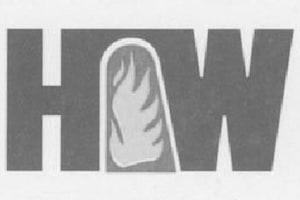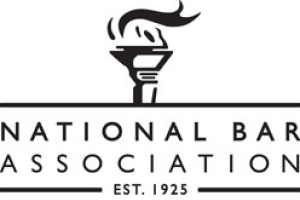Harbison-Walker Refractories Company

In 1865 ten investors, who knew nothing about refractory materials, but who saw an opportunity, invested $8,000 to open the Star Fire Brick Company. With their capital, they purchased land to gain access to clay on the banks of the Conemaugh River near Bolivar, Pennsylvania. Bolivar was already known as Brick Town due to the number of clay works in the vicinity.
Of the partners, Samuel Harbison emerged as the one to learn about, and develop, refractory products for use in the steel industry. Hay Walker provided administrative knowledge. Out of the ten original investors Harbison and Walker were the only remaining partners by 1872. In 1875, to solidify the partnership, they changed the company name to Harbison and Walker.
A refractory product named Chrome Brick was patented by the company in what was then the Dominion of Canada in 1897. The patent documents describe making Chrome Brick by using a mixture of chromite ore, 25% refractory clay and 3% of an alkali material such as lime. These materials would be wet ground, molded and baked in large kilns to form refractory bricks that stood up much better than those made with ore and tar. The patent documents indicate that other materials could be added or substituted. In 1897 the use of asbestos was in its infancy, but it was not too many years before Harbison-Walker started adding asbestos into the mix.
The iron and steel industry were developing rapidly, and at the forefront of that was Andrew Carnegie whose iron mills were the primary customers of Harbison and Walker products. As the Carnegie empire grew, so did the fortunes of Harbison and Walker. Carnegie’s various companies and operations were merged into U. S. Steel in 1902, which is still the largest steel producer in North America. Around that time Harbison and Walker formalized the company name as the Harbison-Walker Refractories Company.
Within the next few years Harbison-Walker purchased or merged with other smaller refractory companies to keep up with the demand that U.S. Steel created. This meant that Harbison-Walker had thirty-three plants producing refractory bricks. To supply their plants, Harbison-Walker owned thousands of acres of land on which clay pits were located, primarily around the Pittsburgh area. Owning the clay works meant that Harbison-Walker was not subject to market price fluctuations or supply issues.
Harbison-Walker opened a research department, known as the Hay Lab, in 1909 to develop silica refractory materials. The Lab was located just south of Pittsburgh on the Monongahela River and utilized clay works located nearby. This lab was utilized to develop refractory materials useful in the steel industry and other high heat industries including glass, pulp mills and copper and aluminum smelters. From this laboratory products including super-duty fireclay, fosterite and refractory linings for rotary kilns were developed.
Chicago was also becoming heavily industrialized in the 1920s and Harbison-Walker built an east Chicago kiln in 1927 to produce refractory materials for the mid-west. A “mold emptying apparatus” was developed by company employees so their facilities were able to increase production considerably. The apparatus was patented in Canada in 1927 so that they could use it in their Canadian facilities as well.
Harbison-Walker in Canada
Harbison-Walker obtained its first Canadian ™ in 1932. This was for a product called STAR fire bricks, harkening back to company beginnings. The ™ was owned by the parent company in Pittsburgh, Pennsylvania. Shortly following this time, the Canadian government embarked on a period of protectionism and set high tariffs on goods imported from the USA. To get around this problem, in 1933 Harbison purchased three Canadian magnesite producing companies and reorganized them into the Canadian Refractories Ltd., a wholly owned subsidiary.
Magnesium carbonate deposits are often contaminated with asbestos. Asbestos was commercially mined in the Munroe township, Ontario, by the Johns-Manville Company immediately adjacent to a magnesia mine purchased in the 1933 Harbison-Walker deal. Another significant area for magnesium was the Porcupine mining district where asbestos was known to exist but in quantities insufficient to entice asbestos companies to set up commercial operations. Therefore, many insulation materials contained asbestos even if it was not intentionally added.
Between 1932 and 1968, Harbison-Walker obtained over 50 Canadian patents for various refractory materials, some of them mentioning asbestos by name as a lightweight aggregate. In other applications only the term “lightweight aggregate” is used.
Harbison-Walker products that are known to have contained asbestos include:
- Cromepak G
- Lightweight Castable 10
- Micacrete 7
- Metalkase Chromex B Fire
- Metalkase Nucon Fire Brick
- Exkase HW Fire Brick
- Exkase Guidon Fire Brick
- Exkase Nucon Fire Brick
- Tabexkase Nucon Fire Brick
Dresser Industries Inc. purchased Harbison Walker in 1967 and registered ownership to all Harbison-Walker’s Canadian wordmarks, trademarks and patent ownership in 1968.
Despite growing awareness of the danger of inhaling asbestos particles Harbison-Walker continued to develop and patent asbestos containing materials in Canada until 1977 and did not remove asbestos from all their products until 1981.
When Halliburton purchased Dresser in 1998, they saddled the company with Dresser’s asbestos liability, including that of Harbison-Walker.
Bankruptcy of Harbison-Walker
The Harbison-Walker company declared bankruptcy in February 2002 under the weight of thousands of mesothelioma claims. Halliburton, who bore ultimate responsibility for Harbison’s liability, had already started negotiations with groups of Plaintiffs lawyers and future victim representatives. The plan was to channel asbestos claims away from the company and require asbestos injury claimants to apply for compensation from an asbestos compensation trust.
An agreement was reached that Halliburton would fund a 5-billion-dollar trust. This trust would have a separate pool of money specifically for Harbison-Walker claims. The plan was rubber stamped by the Bankruptcy court judge on July 21, 2004 and became effective January 2005. The formation of this plan and the bankruptcy of Harbison-Walker means that if you were harmed by working with Harbison-Walker refractory materials, claims against the company are barred. Your only recourse is to apply to the trust.
At Brown Law we apply directly to the DII Industries PI Trust (Dresser’s Industries Inc.) for compensation for Canadians harmed by Harbison-Walker products. Contact us if you would like a no obligation consultation for yourself or a loved one.








